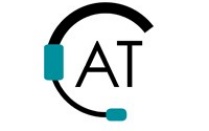Full citation 567
Gardner, Heidi K. (2017): "Getting your stars to collaborate: how Dana-Farber turns rival experts into problem-solving partners." Harvard Business Review 95.1 100-108.
Type: Non-experimental study
Knowledge user level addressed by the literature: Individual, Organizations, Sectors
Experience level of reader: Fundamental
Knowledge user(s) to whom the piece of literature may be relevant: Policy makers, Clinicians, Brokers, Manufacturers, Developers, Intermediaries, Users, Advocates, and Researchers.
Setting(s) to which the reported activities/findings are relevant: Community, Federal Lab, Government, Large business, Small business, University.
Format: Peer-reviewed journal article
Annotation: This paper is a case study of a collaborative effort at the Dana-Farber Cancer Institute. Scientific collaboration programs attempt to connect research to real life applications and many such programs pair university researchers or other public entities with private industry. Collaboration among big entities is a challenge because high-profile researchers are unaccustomed to oversight. In this case, researchers who previously enjoyed full autonomy were offered significantly more money to start a collaborative research center. The project came with the caveat that researchers use best practices commonplace in private industry such as business plans and project management principles. Reframing definitions of success and creating new paths for information sharing worked to foster collaboration over previously soloed and guarded researchers.
This article uses the Commercial Devices and Services version of the NtK Model
PRIMARY FINDINGS
Barriers:
- Collaboration is a challenge because managers are pressed for time, reluctant to give over control, and accustomed to working in silos.
Observations from case study
Occurrences within model: NtK 2.3, 3.1, 3.7 - Business leaders have to appease many constituents with different needs and motivations including investors, customers, and regulators.
Observations from case study
Occurrences within model: NtK 2.2, 4.11 - Cybersecurity is a challenge and a priority for protecting research and intellectual property as well as guarding individuals’ personal information.
Observations from case study
Occurrences within model: NtK 4.4, 4.11 - Scientists and principal investigators can increase their status from the physical size and location of their labs, creating a culture of “ownership” over resources and excluding smaller organizations.
Observations from case study
Occurrences within model: NtK 2.3, 3.1 - Using consultants or temporary workers for operational support sends the message that best practices and oversight are temporary or weakly-supported policies.
Observations from case study
Occurrences within model: NtK 1.4, 4.10
Carriers:
- Scientists who are unaccustomed to oversight benefit from operational support such as report templates.
Observations from case study
Occurrences within model: NtK 1.5, 3.4, 4.3, 4.5 - Including collaborative efforts among outcome tracking as part of a greater accountability system motivates researchers to work together.
Observations from case study
Occurrences within model: KTA 3.F, KTA 7.F, NTK 3.9 - Knowledge sharing across boundaries facilities creative problem solving which is good for business.
Observations from case study
Occurrences within model: NtK 3.9, 4.6 - Winning grants creates a “virtuous cycle” of better research, higher-prestige publications, and more notoriety. An improved reputation attracts better scientists and more support.
Observations from case study
Occurrences within model: NtK 3.4, 3.5
Methods:
- Create a personalized competency grid to identify several core capabilities necessary for each role. Individuals in these roles should meet competency in each area, with one or two stand-out strengths. Observations from case study
Occurrences within model: NtK 3.1, 3.2, 4.10 - Using a web based platform to share project goals and progress encouraged scientists in different offices to join, contribute and communicate.
Observations from case study
Occurrences within model: NtK 3.6, 3.8, Tip 3.B KTA 6.B
Tips:
- Publically acknowledging collaborative efforts motivates ambitious researchers to embrace collaboration.
Observations from case study
Occurrences within model: KTA 3.F, KTA 7.F, NTK 3.9 - Issuing a new challenge to a multidisciplinary team is a strategy for drawing experts out of their silos in a context that does not threaten their sense of autonomy or emotional attachment to their niche.
Observations from case study
Occurrences within model: NtK 3.1, 3.2, 4.10 - Personal meetings, sometimes more than one, may be necessary to address researchers who feel threatened by collaborative initiatives.
Observations from case study
Occurrences within model: NtK 4.4, 4.6, 4.10 - Demonstrate that collaboration delivers better results and has already worked for others to counter skeptics who insist collaboration is not possible.
Observations from case study
Occurrences within model: NtK 2.2, 3.3
